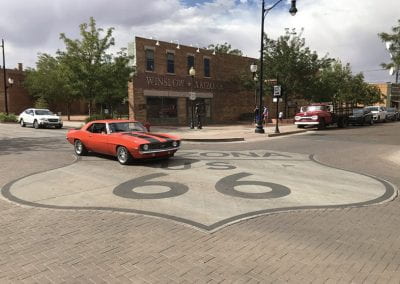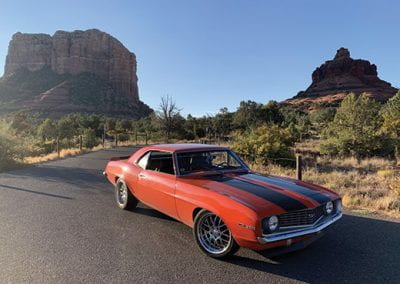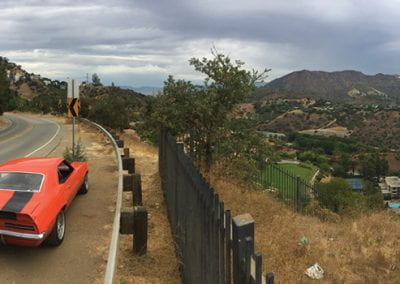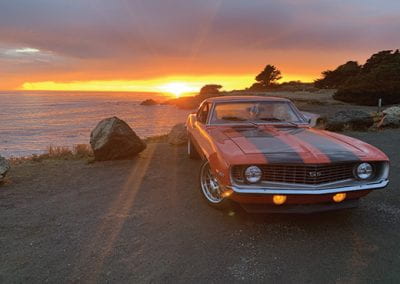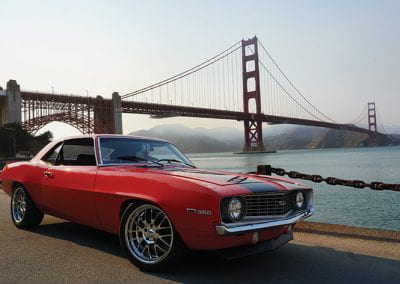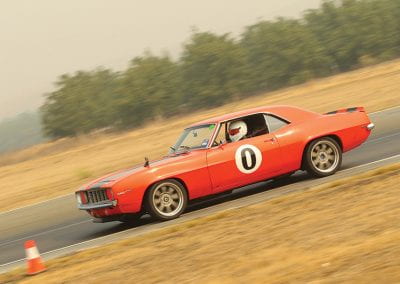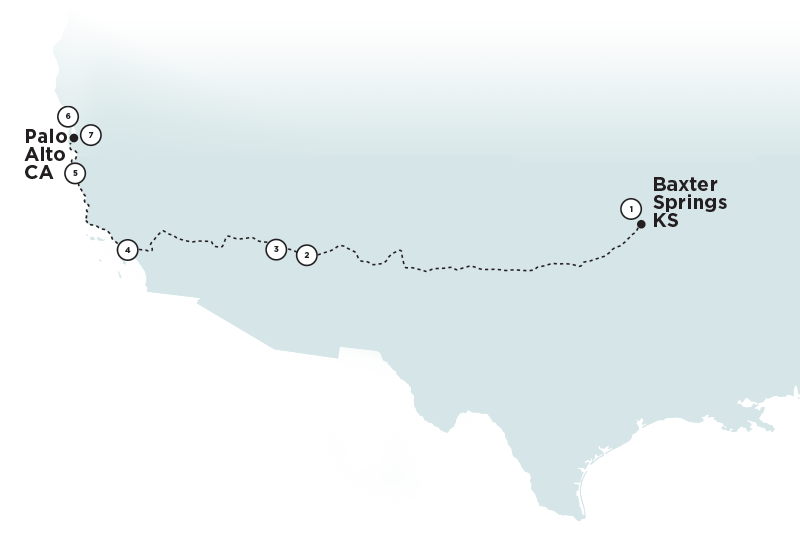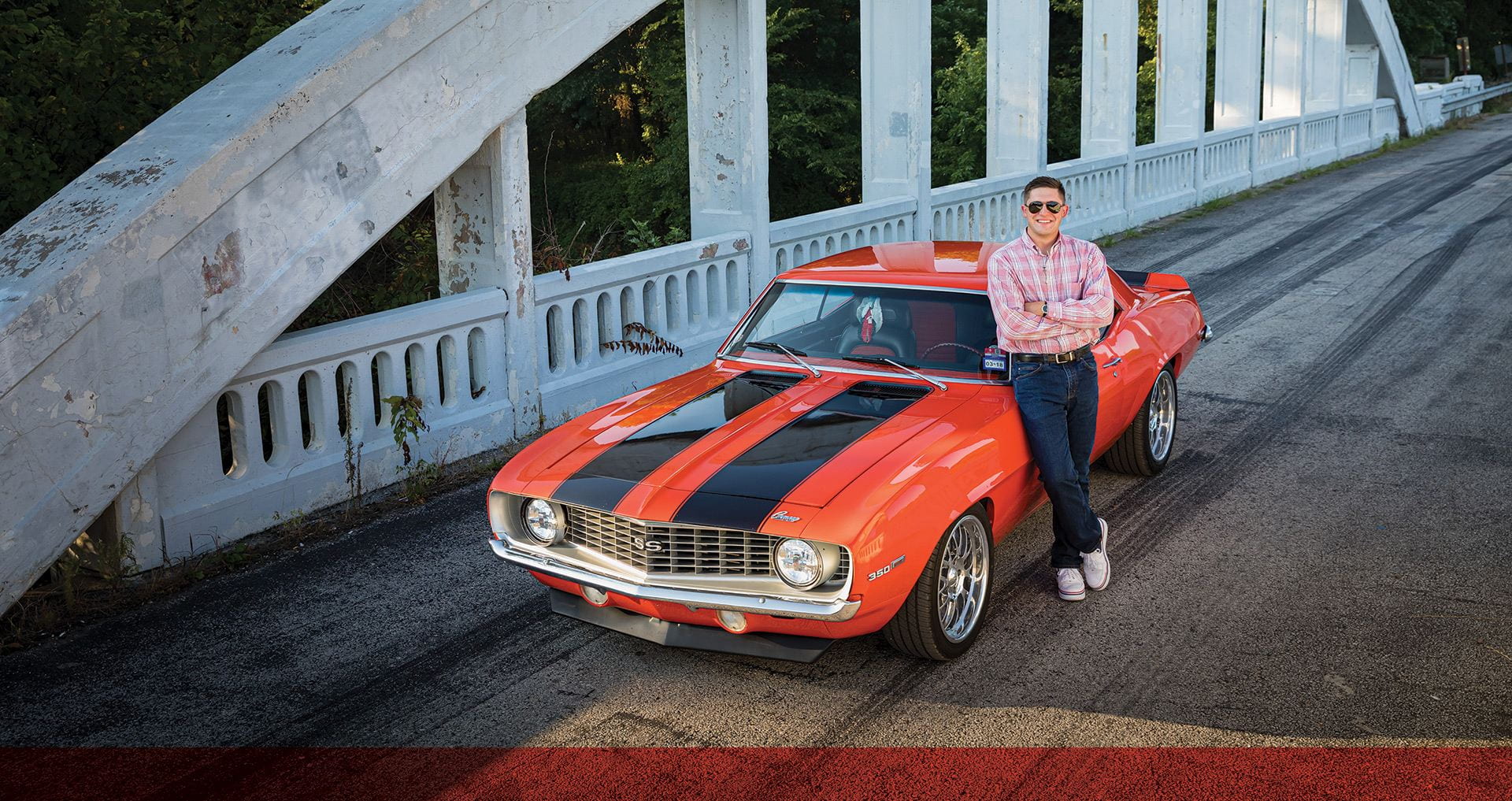

By Kendall Curlee
Photos courtesy of Russell Cothren, Nicholas Broadbent and Dito Milian/gotbluemilk.com
Nicholas Broadbent’s got drive — on steroids. At age 14, he restored a “hugger orange” 1969 Camaro with the help of his dad. A few years later, he earned his first paycheck washing cars at the local Mercedes-Benz dealership, where he was soon promoted to assistant service manager. “I adopted their ‘best or nothing’ mentality. It describes not just the product, but the people who engineer the product. I knew I wanted to work with Mercedes-Benz from that moment,” he said.
By the time Broadbent arrived on the U of A campus to study engineering, he’d added a second big goal to his bucket list: pursue a Ph.D. at Stanford University, working with Chris Gerdes, who is designing autonomous racecars that reach speeds of more than 150 miles per hour.
Broadbent had the vision to dream big, but he credits mentors here at the U of A for helping him map the course to reach his goals. In his first year, he connected with Jim Leylek, professor of mechanical engineering, who helped him devise a plan to reach Mercedes-Benz headquarters in Stuttgart through the U of A’s International Engineering Program. Broadbent enrolled in German courses to prepare for a year of internship and studies in Germany and got a good grasp of computational fluid dynamics research in Leylek’s lab. That work would later prove useful at Mercedes-Benz. At Arkansas, he said, “we were evaluating blood flow in arteries, but those same principles can be applied to aerodynamics in automotive design.”

“Well, we broke an emergency brake cable in Joplin, water temp gauge failed in Topeka, had to climb out of the window in west Kansas (because my electric door locks failed), flooded cylinders through Albuquerque, overheated all the way through the Mojave desert, wiped out an alternator bearing while cruising through the Hollywood Hills on Mulholland, and discovered an intake gasket leak and a drip of oil on the bellhousing in Palo Alto… but after 3100 miles and a gallon of added oil, we finally made it to The Farm. In short, the journey to Cali went exactly as I had expected and the little car did just fine.”
A summer research experience for undergraduates here at the U of A, funded by the National Science Foundation, provided a second big break. Led by Ryan Tian, associate professor of chemistry and biochemistry, and Uche Wejinya, associate professor of mechanical engineering, the team explored graphene oxide as a novel material for battery cell use. Within three weeks, Broadbent developed a solution that was eventually published in the Juniper Online Journal Material Science. To date, he has published six papers with this team and his team at Mercedes-Benz, with four more in the pipeline.
The long-awaited year in Germany moved Broadbent well out of his comfort zone, beginning with a semester of studying vehicle dynamics and internal combustion engines at Technische Universität Darmstadt — in German. “Studying these complex topics in German was a challenge,” he recalled. Participating on the Darmstadt formula student racing team provided a welcome outlet.
The International Engineering Program has never placed a student intern at Mercedes-Benz, so Broadbent took a gamble and decided to apply independently of the program, submitting multiple applications to Mercedes-Benz in one night to increase his chances. It paid off: 11 hours later, he scored an interview. Following the four-hour interview, he was offered an internship on the spot in the company’s “Powertrain Technology and Business Development” department.
“Those guys are wizards,” he enthused. “They’ve recently engineered high-performance powertrains capable of converting 50% of the chemical energy stored in gas into mechanical energy that moves the car. In most cars, that percentage ranges from 25 to 35%. That helps to reduce our carbon footprint by quite a bit and improves the future outlook of the internal combustion engine.” Although he was excited to join the team, Broadbent felt a bit out of his league. “I was surrounded by brilliance; my team of fellow interns was entirely comprised of master’s and doctoral students.”
Fortunately Broadbent was able to draw on his UA research experience in computational fluid dynamics, finite element analysis, and computer-aided design and manufacturing. Working at Mercedes-Benz further expanded his toolkit: “SPH — smoothed particle hydrodynamics — was developed in the ’70s to simulate theoretical astrophysics; today, it’s a very efficient way to model fluid dynamics. But what about solid mechanics?” Broadbent used SPH to optimize computer numerical control programs used in manufacturing high-performance turbochargers. “The objective was to reduce applied forces and heat production in the manufacturing process; this increases efficiency and extends the life of CNC cutting tools.” Broadbent and his team at Mercedes-Benz published this innovative methodology in the proceedings of the 9th Congress of the German Academic Association for Production Technology in September 2019.
Upon his return to Arkansas, Broadbent completed his degrees in mechanical engineering and German and was accepted into the top three engineering graduate schools in the world — MIT, Stanford and Berkeley — to pursue a Ph.D. in mechanical engineering. True to his dream, he chose Stanford, where he is studying at Gerdes’ Dynamic Design Lab and Center for Automotive Research on a $330,000 fellowship. He opted to drive across country to Palo Alto in his trusty orange Camaro — along Route 66, naturally.
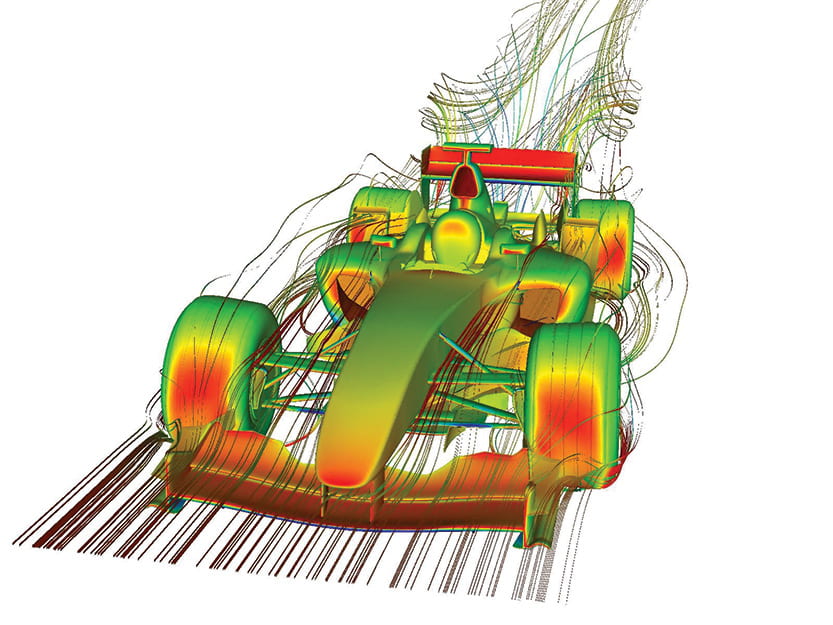
Aerodynamic Analysis with Computational Fluid Dynamics. This sample analysis provides a visualization of airflow moving through and around an open-wheel racecar at speed. Additionally, the color scale on the car itself depicts a pressure gradient. By Bernoulli’s principle and the conservation of energy, pockets of high static pressure concentration (e.g. at front and rear wing for downforce) correspond to a non-linear reduction in airflow velocity. Engineers are therefore tasked with optimizing the balance between minimizing aerodynamic drag at high speed and maintaining sufficient downforce in low-speed cornering.


